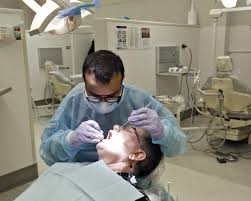In a sweeping move to improve healthcare access for older Americans, free dental programs have been expanded across the United States in 2025, with provisions specifically focused on seniors. This expansion comes as rising dental costs continue to burden retirees on fixed incomes, leaving many without proper oral care.
A Step Toward Comprehensive Senior Health
For decades, dental care was often overlooked in public health initiatives, especially among seniors who struggle with reduced coverage after retirement. Medicare typically does not provide extensive dental benefits, creating a gap that many seniors cannot afford to fill out-of-pocket. The 2025 expansion of free dental programs, led in coordination with federal and state initiatives, aims to close that gap.
Officials say the programs will provide seniors with preventive services, such as cleanings, checkups, and X-rays, as well as urgent care assistance, including tooth extractions, dentures, and partial prosthetics. This move is expected to improve not only oral health but also reduce secondary health risks linked to poor dental hygiene, such as heart disease, diabetes complications, and malnutrition.
Also Read
Why 2025 Marks a Turning Point
While several individual states had pilot projects in past years, 2025 marks the first nationwide push to collect and streamline these benefits into easier-to-access directories. Advocates say this will help seniors quickly find available services in their area, eliminating confusion that previously made assistance difficult to navigate.
The expansion is also seen as a response to growing demand. Data shows that nearly one in three seniors have untreated dental conditions due to cost concerns. By consolidating services through state-level programs, more elderly residents can receive the dental health attention they need without the financial strain of mounting medical bills.
How the Directory by State Works
The newly-established Directory by State allows seniors and their families to search for free or low-cost dental care options based on residency. Each state has contributed to creating updated lists of clinics, universities, nonprofit organizations, and government-backed services offering no-cost treatments for seniors.
Highlights of the directory include:
-
Local Community Clinics: Many community health centers now provide expanded dental services funded by state grants.
-
Dental Schools: Universities are offering free clinics supervised by licensed professionals, giving seniors safe and affordable care.
-
State Health Programs: Medicaid expansions in certain states cover more dental options than before, with eligibility widened for low-income seniors.
-
Mobile Units: In rural areas, mobile dental vans have been deployed to reach seniors who cannot travel long distances.
State-by-State Overview
Although the full directory is extensive, here are examples of how specific states are handling the expansion:
-
California: Expanded its senior dental coverage under Medi-Cal, offering free preventive services and dentures to qualified low-income seniors.
-
Texas: Rolled out mobile dental vans across rural counties, ensuring thousands of seniors in underserved regions receive annual checkups.
-
New York: Partnered with dental universities and nonprofit clinics to provide seniors with free crowns, fillings, and cleanings.
-
Florida: Created senior-focused dental hubs in retirement-heavy counties, aiming to reduce wait times and expand denture services.
-
Illinois: Increased funding for community health centers, ensuring seniors have year-round, no-cost dental treatment options.
Each state tailors the services to its population needs, but all now maintain updated entries in the 2025 directory for easy navigation.
Impact on Seniors’ Lives
Health experts stress that providing dental care for seniors goes far beyond treating cavities or extractions. For many, poor oral health directly affects nutrition, overall well-being, and quality of life. Seniors avoiding solid foods due to missing teeth are more likely to suffer from malnutrition and related health complications. Likewise, untreated oral infections can worsen chronic conditions such as diabetes and heart disease.
With the burden of cost lifted, seniors across the country are expected to see improvements in confidence, dietary choices, and daily comfort. Family caregivers also benefit, as these programs reduce out-of-pocket expenses and stress.
Looking Ahead: What Comes Next?
While the expansion of free dental programs in 2025 is being celebrated as a critical victory, experts emphasize that outreach remains a challenge. Seniors need help understanding eligibility rules, locating nearby clinics, and scheduling appointments. States are working to create helplines and digital resources to improve accessibility for both urban and rural areas.
Policymakers are also considering permanent legislation to secure funding for these dental programs in the future, ensuring they are not subject to shifting political or economic winds. Advocates hope this expansion is only the beginning of integrating dental health fully into senior medical care nationwide.
FAQs
1. Who is eligible for the expanded free dental programs?
Most programs are focused on seniors aged 60 and above, with priority given to low-income or fixed-income individuals.
2. Does Medicare now cover free dental services in 2025?
Medicare coverage remains limited, but many states have expanded Medicaid and local programs to fill the gap.
3. What types of dental services are included?
Services typically cover preventive care, checkups, extractions, dentures, and in some states, crowns or fillings.
4. How can seniors access the state directory?
The directory is available through local health departments, senior centers, and community clinics. Many states also offer hotline assistance.
5. Will rural seniors also benefit from the program?
Yes, several states have launched mobile dental vans and rural outreach initiatives to ensure access for isolated communities.












